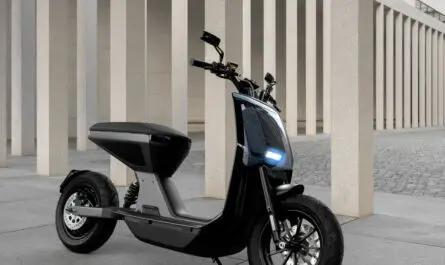The explosion is a physical and chemical phenomenon resulting from the disintegration of matter followed by sudden projections of particles.. The explosion manifests itself if overpressure is exerted in a non-expandable volume. Improper vehicle maintenance mainly causes the explosion in the scooter. Failure to meet maintenance deadlines would cause unexpected breakdowns which could result in the scooter itself exploding. For example, the breakdown of the distribution causing the cam opening of the exhaust valve or the use of a conventional battery already out of service. But also the failure to replace a filler cap without an automatic vacuum system could all cause explosions.
Scooters - general information
Here is an article that serves as a guide and helps you choose your scooter better before purchasing. For this, we give you the details on the characteristics and the different types of scooter.
Electric scooter exploding
An electric scooter is serviced to prevent the batteries of electric scooters from exploding and causing injury to others. One of these recommendations is to keep the battery temperature at a constant level. In reality, lithium-ion batteries are not too keen on extreme temperatures, whether those temperatures are negative or positive. When charging electric scooters as well, it is desirable to opt for slow charges, as fast charging may also cause the scooter to explode.
Sometimes the way of building the battery will also cause the scooter to explode. It is better to opt for scooters whose battery manufacturing standards have been approved by the competent authorities. But also, when the temperature of the lithium-ion scooter batteries soared to exceed 100 degrees Celsius, a series of chemical reactions were created. This accompanies a significant release of heat. If this runaway is not stopped in time, the fire and explosion of the scooter would be ensured all the more so as a flammable electrolyte equips the battery.
Exploding scooter tank
A scooter is a combustion engine if it is equipped with a gasoline combustion engine. Its fuel system is equipped, among other things, with a fuel tank subjected to an overpressure if its internal temperature rises. To prevent this excess pressure from causing an explosion and then a fire, the fuel tank cap has been fitted with an automatic vacuum system. The reservoir cap creates an orifice allowing direct access to the free air in the reservoir if the pressure within the reservoir increases. This allows the excess pressure to be evacuated, thereby regulating the internal pressure within the reservoir.
In this case, if the cap could no longer vent the pressure exerted in the tank, there is a risk of thermal runaway. There will be a considerable increase in temperature to such an extent that an explosion is possible. Because gasoline in its liquid state is volatile and takes up more space if it turns into gas. However, the volume of the tank is not expandable, hence the risk of explosion. The tank cap should be replaced once the user notices that a excess pressure suddenly escapes from the tank. This situation is observed if he opens the tank to fill up with gasoline, for example.
Exploding scooter heat engine
The scooter heat engine has been designed so that the overpressures acting within the engine can be evacuated to ports of two internal evacuation systems: the exhaust valve and the breather. The exhaust valve allows the pressure to be released from the combustion chamber to the open air. But also, the function of the breather of the oil pan is to release the pressure towards the intake to then be routed to the exhaust in order to reach the open air. Thus, the fact of removing these evacuation orifices will further increase the pressure exerted in an engine and the risk of the scooter exploding would be real. A rupture of the cam in the cylinder head of the scooter engine would prevent the exhaust valve from opening to relieve the overpressure. It will also be necessary to avoid evacuating the crankcase breather directly into the open air to protect against pollution.
Classic scooter battery exploding
A conventional battery producing hydrogen is fitted to a scooter with a combustion engine. Hydrogen is one of the constituents of water. Normally, the discharged hydrogen is odorless when the battery is functioning properly. It is harmless in this case. Nevertheless, a battery is subject to wear over time then emits symptoms of fatigue at the end of its life cycle where it would no longer be possible to recharge it. At its end of life, the battery produces toxic fumes from unexpected excess chemical reactions if it is still charged.
The resulting thermal runaway produces even more hydrogen which is a highly explosive and flammable product when its reaction is no longer under control. Thus, the walls of the battery will no longer be able to contain the excess pressure caused by the thermal runaway of the various chemical reactions. There is therefore the risk of the scooter exploding. To avoid this, avoid recharging a lead-acid battery that is out of service. Replace it with a new one.
Our recommended products:
Here is a selection of some scooter parts and components that may interest you.




